Postcard from Umbria
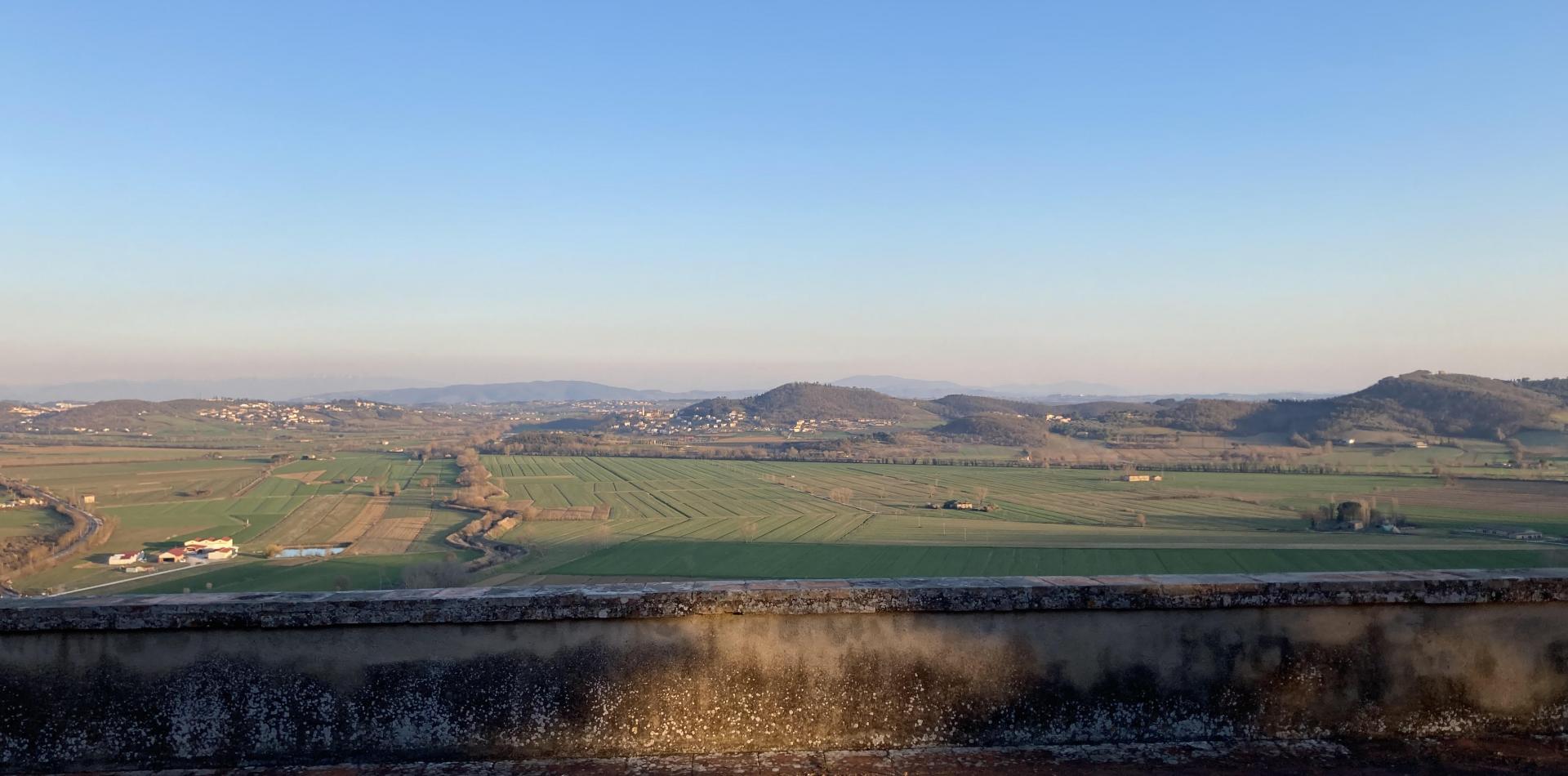
In Italy we have a saying, ‘nella botte piccola c'è’ il vino buono’. At e5 the point is being proven by Oli+Sam of Natural Born Wine. Ever since I saw their stall in Victoria Park and started learning about their emphasis on small yields of natural wines, they have been supplying our shop with delicious and original Italian wines. So when the chance arose to join them in Italy and meet the producers, it was too good an opportunity to resist.
I meet the rest of the group very early in the morning at the airport and despite the general sleepiness I know straight away that the next few days won't be lacking in laughter. We arrive in Perugia on a sunny Sunday morning where we are picked up by our host Danilo Marcucci and his young Canadian helper Luca. Danilo is a legendary figure in the Italian natural wine scene as well as the man behind the cantina Conestabile della Staffa. He has over 20 years of experience in viticulture and besides making his own wine he assists other producers with his knowledge. He is considered a master of natural winemaking nationally and internationally and he has somehow become the gate to international markets for many of the producers we are going to meet in the next few days. Luca, on the other hand, is a cheeky chap in his 20’s who has been spending the last 3 months with Danilo to learn about natural wines (but who seems equally interested to learn about the local girls). The two of them have a funny little act where Danilo is trying to teach Luca something and Luca is never paying attention. If I had to give this trip a background sound it would be Danilo shouting “Luca!” across a vineyard. It’s all very friendly of course and it soon became a running joke with everyone occasionally shouting the poor guy’s name.
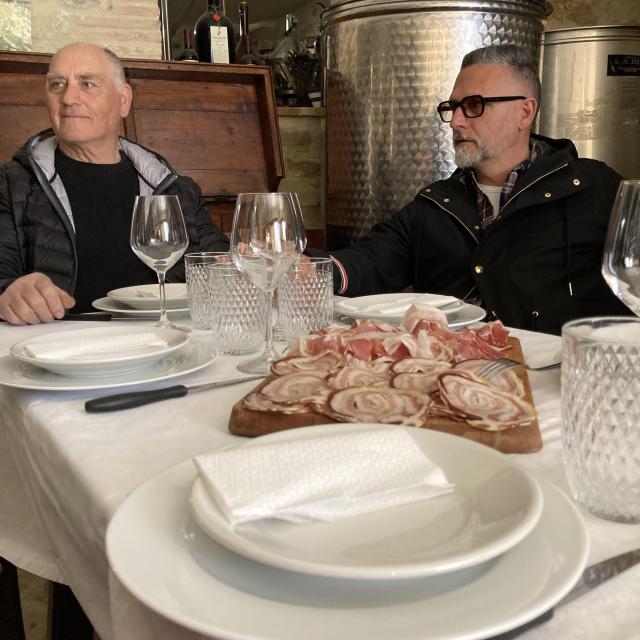
Our first stop is Collecapretta - a 4 hectares property where Vittorio Mattioli, his wife Anna and his daughter Annalisa farm small animals, make olive oil and, of course, wine. This family has been running their small farm in the same humble way people have been doing for hundreds of years - in tune with nature respecting the heritage of their land. Their approach to wine follows the principles of low intervention on the soil, use of indigenous bacteria only, preservation of biodiversity, free fermentation and no use of chemical pesticides. After the initial introductions, we sit around the table overlooking the vineyard and we start tasting the wines they produced last year. The tasting is accompanied by the delicious food Anna has prepared for us - goose egg pasta, wild boar stew, truffle crostini, cheese and salami. Proper Italian Sunday lunch. Food and wine have a tight relationship here - as Danilo says “wine is the slave of the food and in order to understand the wine you need to eat it with the food it is meant to be with”. For someone who is fairly new to wine this kind of statement could have sounded exaggerated but tasting truffle crostini with the white “Terra dei Preti” made it suddenly very clear. This wine is made with Collecapretta oldest vines - a native grape called Trebbiano Umbro - that carries the notes of the surrounding woodland including the truffle which is very abundant in the area. The terroir has its own identity and this is reflected in its produce. I leave Collecapretta with a full belly, slightly tipsy, feeling incredibly fortunate to be able to witness Vittorio and Annalisa’s passion and dedication to what they grow and make.

The next stop is Conestabile della Staffa - Danilo and Alessandra’s cantina. A 12 hectares vineyard and a stunning castle all part of Alessandra’s family estate where the Marcucci family lives. Wine has been made at Conestabile dellsa Staffa since long before Danilo as proven by the disused gigantic wooden barrels crowding the old cellars. However, after the Second World War the production stopped mainly due to a lack of a workforce. After years of neglect the vines Danilo inherited were in need of some love and a new direction. At the time Danilo was determined to move away from the intensive production implemented in other regions of Italy and became committed to the idea of making good honest wine in the same way his grandfather used to. After a few years of learning from skilled makers like Vittorio in 2015 he released his first natural wines made using only native grapes and wild yeasts. He nurses his vines like babies and he is incredibly attentive to the health of the soil; however, once the grapes are in the tanks he lets nature - and a fair amount of praying apparently - do the rest. The results are incredible: Grecorange, a blend of Grechetto and Verdello with notes of white cherries and a very green energy; Mosso Rosato, perfectly pink and so much fun, just to name a couple.
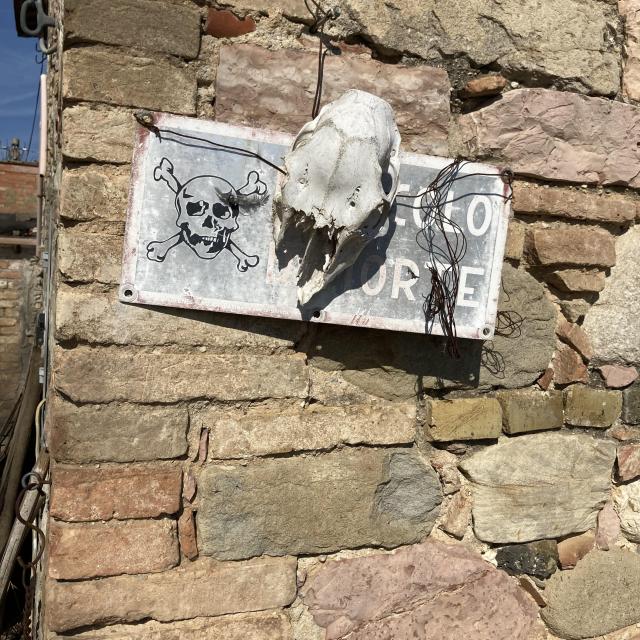
Danilo is also the mind behind Ceppaiolo - a very small vineyard he saved from disappearing a few years ago. This place has a rather punk feel about it with derelict cars, several piles of junk and “pericolo di morte'' signs on the walls. You would never think anything good could come out of this little bit of unkempt vineyard. Well, don’t judge a book by its cover, they say. Danilo tells us this is the place where he has fun, where he makes the wines he wants to drink daily, where his playful and more experimental instincts get involved. We sit right in the middle of the vineyard and unceremoniously taste wine while eating roasted potatoes with our hands. The wines reflect the spirit of the place and the energy Danilo invests in it - they are bolder and more playful. My favorite by far was a sparkling white called Ceppa21. I’m still dreaming about it weeks later. In the bottle it looks almost like thick juice and in the glass is unlike anything I have ever tasted before - light bubbles, dry but very smooth with distinct pear notes. I know I’m not doing it justice so you will have to try for yourselves once it appears on our shelves.
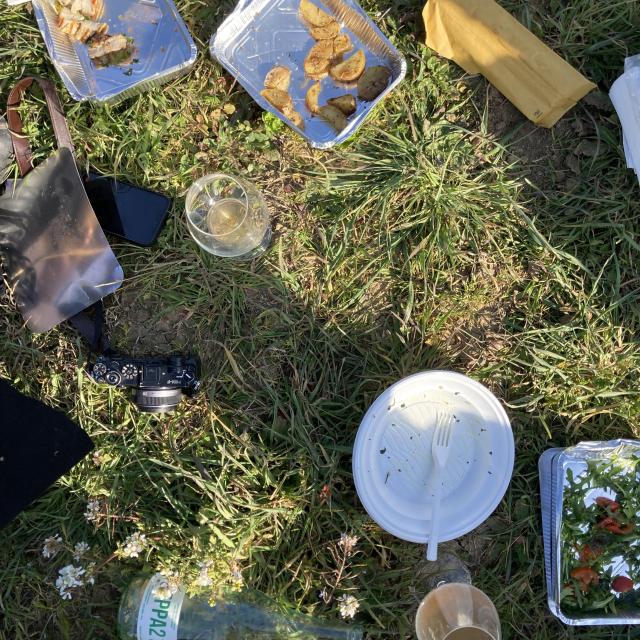
The day after we are back on the minivan and head to Tiberi. A small vineyard of 3.5 hectares that was founded in the early 1900s near Perugia and has been in the family for four generations under the supervision of Cesare Tiberi. Today his grandchildren Federico and Beatrice are involved in every step of the production. Despite having introduced few modern touches such as a new and more spacious cellar they are still very loyal to Cesare’s traditional approach and they are still making wine with some of the oldest grape varieties in the area. Tiberi’s tasting is another delicious combination of food and wines: lardo di Colonnata - lard cured between slabs of Carrara marble - paired with Tiberi sparkling rosato “Musticco” was a firm favorite. ‘I Bianco” - a clean but soft white with notes of green apple - paired with a warm bowl of chickpeas with olive oil and rosemary tasted so simple and yet very satisfying. Towards the end of our tasting we were surprised by Federico’s little boy Christian’s appearance. I’m told he is the real boss around here. So much so that they named their red Pet Nat Cri Cro after him.
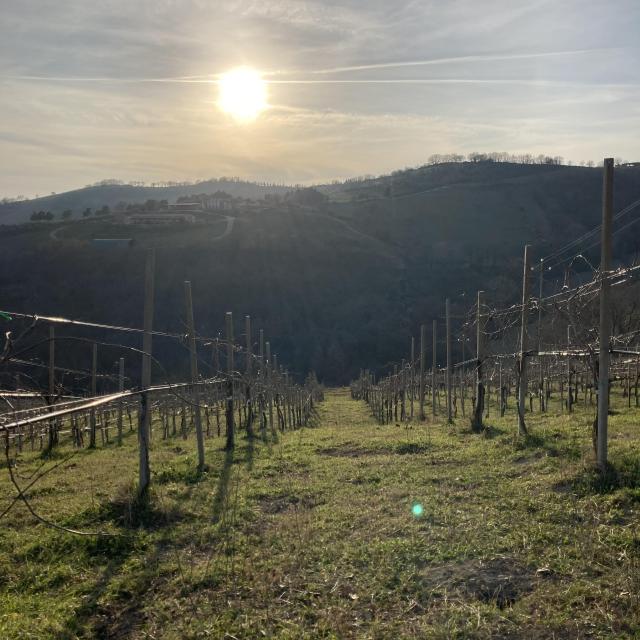
Our last stop is Vini di Giovanni. The label on the bottle says “il pastore che fa il vino” and this is exactly what Giovanni is - a shepherd who makes wine (and olive oil from stunning 300 years old olive trees). We arrive perfectly in time to enjoy the stunning view of the rolling hills at sunset. Before settling inside for our tasting we manage to squeeze in a quick visit to Giovanni’s sheep and to the sweetest little donkey named Cappuccino. Inside we are welcomed by Martina, Cosetta, a crackling fire and a table groaning under more cheese, prosciutto e crostini. Everything is made here or found in the surrounding wood, including the wild asparagus for our pasta dish. Giovanni’s wines are made strictly in a natural manner and taste like a sophisticated version of what in Italy we call ‘vino contadino’ - the farmer's wine. Simple and honest yet balanced and exciting. A real treat.
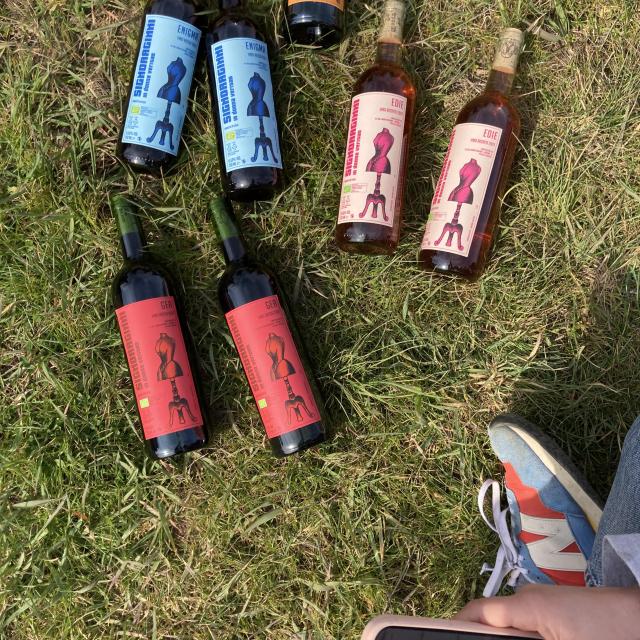
Before I sign off I would like to mention a new young producer who has recently released her first vintage under Danilo’s supervision. Sadly, Giorgia couldn’t be with us due to Covid but her dad Gianfranco made the trip to meet us. Her wines are labeled as Signora Ginni - Giorgia’s alter ego and are all named after old fashion icons as a hint to Giorgia’s previous career in fashion. Her vineyard is in Cortona which is on the border between Umbria and Tuscany, right on the other side of Lago Trasimeno. Danilo explains that Giorgia operates with minimal intervention on the soil. Even the weeds go untouched in order to preserve biodiversity and let the array of plants, insects and fungi keep the soil healthy and the vines happy. Gianfranco doesn’t bring only Giorgia’s wines but also his wife’s “frittata di maccheroni” - a traditional Neapolitan dish made with leftover tomato spaghetti and cheese turned into a frittata. Genius. We eat the frittata sipping Vivien, a 15 days skin contact white with the most amazing amber colour and the perfect acidity to accompany the rich food. Giorgia’s wines definitely have a feminine touch and, from what Gianfranco tells us, they genuinely represent her personality. It must have been quite challenging for a young woman to change her career and embark on a new project in a world that is still quite male-dominated. Giorgia obviously is determined, brave and talented. Signora Ginni’s wines are simply a tasty proof of that.
I feel very fortunate to have been able to meet these amazing producers and learn about their work while soaking up some Italian sunshine. During this trip I have gained a deeper understanding of the work, passion and hardship that goes into the wine I enjoy back in London. Living in a big city where everything often comes to you, it's easy to lose touch with the stories behind what we eat and drink. Trips like this are an opportunity to shine the spotlight on what Danilo called the “human factor” - essentially the goodness of the people who make what we love.
Marianna




